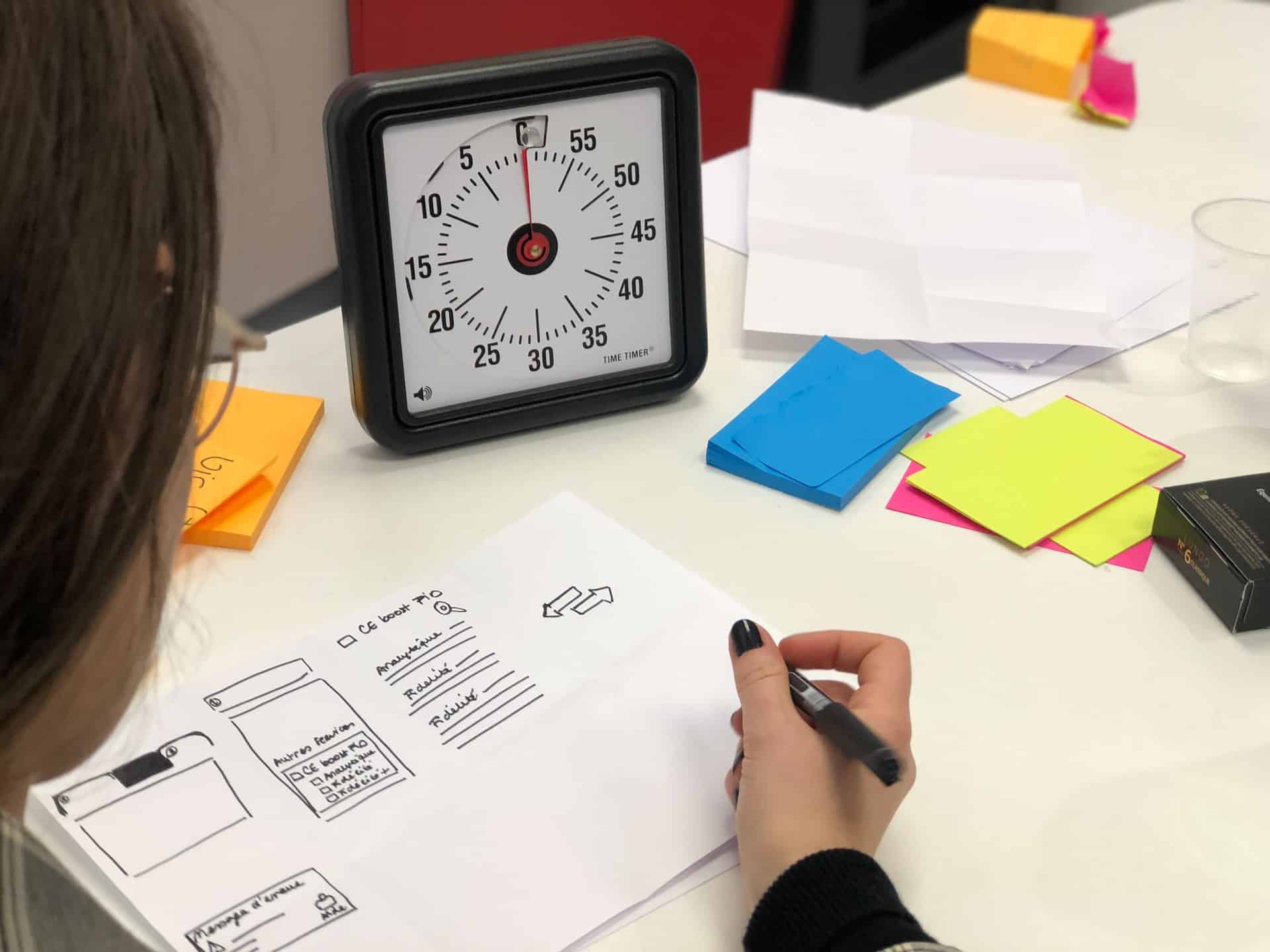Pomodoro Technique: Get More Done in Less Time
“There’s a myth that time is money. In fact, time is more precious than money. It’s a nonrenewable resource. Once you’ve spent it, and if you’ve spent it badly, it’s gone forever.”
Neil A. Fiore, Ph.D. is a licensed psychologist, trainer and the author of six books.
Time is your most valuable resource. When you waste time, it’s lost forever. Most people never seem to have enough time, procrastinate, and struggle to get work done by the deadline.
Every minute you spend working, you’re building your business—but every minute you spend distracted or procrastinating is a minute wasted that you’ll never get back. We all struggle with focus and avoiding time-wasting behaviors that suck the productivity right out of our day.
That’s why I’m such a strong advocate of the Pomodoro Technique. Have you heard of it?
The Pomodoro Technique helps you divide your time into manageable work chunks instead of trying to do everything at once. It also helps your brain get into the flow, which can help you hyper-focus on the task at hand and unleash your productivity.
Let me share how I’ve been using the Pomodoro technique to get more done each day without burning myself out so you can try it yourself and finally cross some big items off your to-do list.
What is the Pomodoro Technique?
In the 1980s, Francesco Cirillo developed his revolutionary time management method to be more productive at college. He read a study that showed breaking down work into 25 to 40-minute intervals made it more manageable to finish.
Thus, Cirillo experimented with a kitchen timer shaped like a pomodoro (Italian for tomato) to track his time. He divided his time into pomodoros or dedicated work blocks of 25-minute time intervals with 5-minute breaks in between. He minimized interruptions and grouped pomodoros to enhance his focus, tackle longer projects, and improve his productivity.
Eventually, the Pomodoro Method became widely known. It has become one of the most popular productivity techniques, and millions of people use it worldwide. In 2006, Cirillo published the Pomodoro Technique to describe the Pomodoro Method in detail.
Why You Should Manage Your Time With the Pomodomo Method
The Pomodoro Technique can be your secret weapon for conquering tasks and achieving laser focus. Here’s why Pomodo Method can help you manage your time:
- Beat Procrastination: We’ve all been there – staring at a task, feeling overwhelmed and unsure where to begin. The Pomodoro Technique breaks down those mental barriers, making it easier to get started and build momentum.
- Minimize Distractions: In today’s digital world, distractions are everywhere. The Pomodoro Technique trains your brain to resist those temptations and stay on track, helping you achieve a state of deep focus.
- Prevent Burnout: Ever feel exhausted after hours of nonstop work, even if you haven’t accomplished much? The Pomodoro Technique’s built-in breaks offer a chance to recharge, ensuring consistent productivity throughout the day.
- Increase Productivity: By working in short, focused bursts followed by short breaks, you’ll discover that you can achieve more in less time. It’s like having a secret weapon that supercharges your workflow.
- Boost Motivation: It is incredibly rewarding to see yourself complete tasks and make progress. The Pomodoro Technique provides a clear framework for achieving your goals, which can be a major motivator in itself.
How Does the Pomodoro Technique Work?
Now, we will help you take action using the Pomodoro Technique. This method will help you manage your time into pomodoros separated by smaller breaks.
After about four pomodoros, you should take a more extended break. During each Pomodoro, eliminate all distractions and focus on the planned task without multitasking.
#1) Decide on the Task to Work On
Choose the task to work on for your Pomodoro. You should be strategic in deciding which tasks need to be done.
Use the Eisenhower Matrix to determine what to work on now while deferring, delegating, or deleting other tasks from your workload. Frame the tasks as SMART Goals that are simple, meaningful, actionable, realistic, and trackable.
#2) Set the Pomodoro Timer for 25 minutes
Set a timer for 25 minutes. You can use a kitchen timer or your cell phone stopwatch app.
However, I recommend using the Tide app, as you can customize each Pomodoro with natural sounds like oceans, rain, or storms. Your timer marks the time you commit to working on the task you chose in the previous step.
#3) Work on the Task until the Pomodoro Timer Rings
Fully invest yourself in your task for the next 25 minutes. When your mind wanders or you think of other tasks that you need to do, list these ideas and tasks on a sheet of paper or digital notebook. These notes will help you clear your brain to focus on your chosen Pomodoro Technique task. You can always return to your list after finishing your pomodoros.
Note that the 25-minute Pomodoro can help your mind get into a flow state. Also known as being in the zone, a flow state is a mental state in which you are fully engaged in your chosen task, feeling energized, focused, full involvement, and enjoyment.
Thus, you are making significant progress on your work and may not want to stop. Thus, some people like working for longer periods of 45 minutes to an hour (also known as a power hour) with a longer break afterward.
#4) Take a Short 5-Minute Break
Great Job! Hopefully, using the Pomodoro Technique, you just worked on a task for a distraction-free period. Now, give yourself a short 5-minute break. If you worked for over 25 minutes, you should reward yourself with a longer break.
This time off can involve getting coffee, taking a walk, meditating, exercising, or reading. It will give your mind some time to rest before you get into a flow state again.
#5) After 4 Pomodoros, Take a Longer Break
After completing four pomodoros, take a longer break of about 20 to 30 minutes. You earned it by focusing on your work using the Pomodoro Technique for 100 minutes or longer!
The longer break will give your mind time to rest and digest your work before starting the next round of Pomodoro methods.
#6) Review Your Work
After your tasks are finished or done with your pomodoros, you should conduct a review. This review is to understand how the tasks went and what actions can be taken to improve productivity.
Before starting the following work blocks, you can implement what you learned to be more productive using the Pomodoro Technique.
Key Considerations For Successful Pomodoros
To effectively implement the Pomodoro Technique, you’ll need to fine-tune your approach to suit your personal workflow. Here’s how you can maximize the benefits:
- Divide your work into smaller blocks – Start by splitting your workday into 25-minute chunks, each followed by a 5-minute break. These intervals are referred to as ‘Pomodoros’. The frequent breaks refresh your mind, making it easier to maintain a high level of performance throughout the day.
- Define the task you want to work on during the Pomodoro – Before you set the timer, clearly define what you aim to accomplish in the next 25 minutes. This focus removes ambiguity and enhances your efficiency.
- Commit to using the technique during each work block – Consistency is key. Ensure you’re fully committed to the method for each Pomodoro. Avoid interruptions by silencing your phone and closing unnecessary tabs on your computer. This undivided attention to the task will help you achieve more in less time.
- Get into a flow state to hyper-focus on the task at hand – The Pomodoro Technique can be a gateway to achieving a flow state, where you’re so absorbed in the task that everything else seems to fade away. This intense focus can dramatically increase your productivity and creativity.
- Conduct a review to understand what you can improve upon – After completing a set of Pomodoros, take a longer break to reflect on your progress. Assess what worked well and identify areas for improvement. Continually refining your process will help you optimize your efficiency and effectiveness.
By integrating these key strategies into your daily routine, you can transform your workday. The Pomodoro Technique isn’t just about keeping time; it’s a comprehensive strategy to enhance your productivity and achieve a balanced workflow. Give it a try, and you might find that you can get more done with less effort and more satisfaction.
Taking it to the Next Level: Get a Pomodoro Timer
Ready to elevate your Pomodoro experience? A dedicated Pomodoro timer can be a game-changer.
These handy tools aren’t just about keeping track of time; they’re about creating an environment that fosters focus and minimizes distractions. Imagine having a visual and auditory cue that signals the start and end of each Pomodoro session – it’s like having a personal productivity coach right on your desk.
Some Pomodoro timers even offer additional features, like customizable sounds, ambient noise options, and tracking capabilities. This allows you to tailor your Pomodoro sessions to your preferences and monitor your progress over time.
Whether you prefer a simple analog timer or a feature-packed digital app, investing in a Pomodoro timer can help you stay on top of your game and maximize your productivity. Looking for a reliable Pomodoro timer to kickstart your journey?
Check out this Tomato-Shaped timer or Yueton timer to help you stay focused.
Alternatives to Pomodoro: Get Focus Blocks
While the Pomodoro Technique works wonders for many, it’s not a one-size-fits-all solution. If you find the 25-minute work sprints a bit too rigid, there are alternative time management methods developed to suit various needs.
One popular method is time blocking. This involves dedicating specific chunks of your day to particular tasks or types of work. For example, allocate the morning to single-task focus hours, the afternoon to meetings, and the evening to creative projects.
Another alternative is the Flowtime Technique, which prioritizes working in a flow state. This involves setting a timer for a specific task but allowing yourself to continue working beyond the set time if you’re deeply focused. Once you feel your mental fatigue setting in, take a five-minute break and then start a new “flowtime” session.
Ultimately, the best time management method is the one that aligns with your individual work style and preferences. Experiment with different techniques and see what helps you achieve your peak productivity. Whether it’s Pomodoro, time blocking, Flowtime, or a combination of approaches, the key is to find a system that empowers you to get things done.
Final Thoughts on the Pomodoro Technique
In today’s fast-paced world, the time management method developed is a valuable commodity that we can’t afford to waste. That’s why finding effective ways to manage our daily tasks and increase productivity is so important.
The Pomodoro Technique has been around for decades but continues to prove its effectiveness in helping individuals get more done with less time. Breaking down tasks into manageable intervals, separated by short breaks, and taking short breaks in between, this technique allows focused work and motivation while avoiding burnout.
And who doesn’t love the idea of working for 25 minutes straight with a tomato-shaped kitchen timer and then rewarding ourselves with a quick Instagram scroll? But let’s not forget the importance of prioritizing our tasks based on urgency and complexity—something that the Pomodoro Technique also helps with by giving us a structured approach to tackling our workload.
So go ahead, give this method a try, and watch your productivity soar during those longer focus periods! And if you’re feeling overwhelmed, just remember: one tomato at a time, you got this. Take regular breaks and happy pomodoring!








